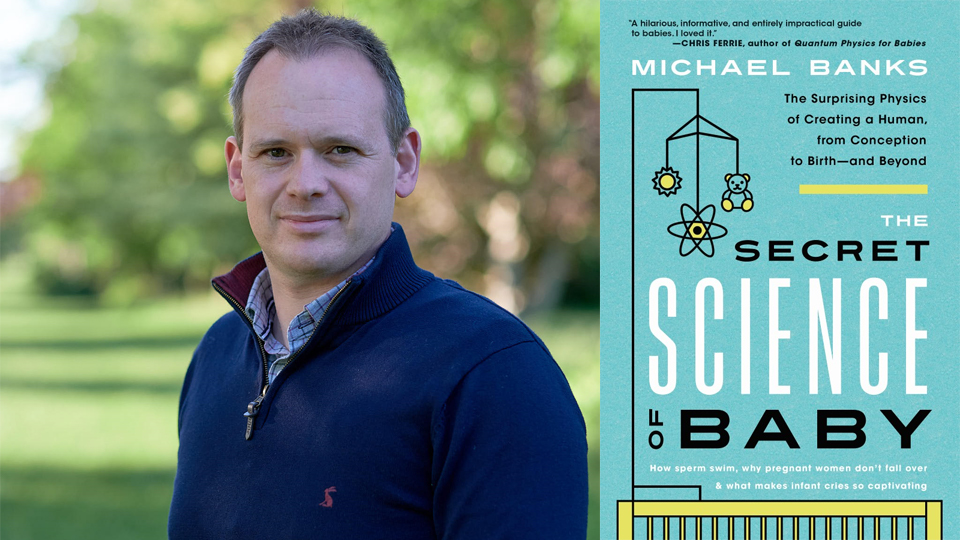Michael works as a science journalist, working as a news editor of Physics World Magazine, a monthly publication from the Institute of Physics UK. He uses his knowledge of physics to explain the unanswered questions behind all things baby. The book informs both parents wanting to understand the science behind labour and what follows it, or anyone else with a curiosity about physics and the ways in which it allows everyday functions.
The alumnus’ book is not intended to be written as a guide on how to raise children but as an explanation of why certain developmental stages occur.
When asked about the inspiration behind writing The Secret Science of Baby, Michael said:
“When my wife and I had our two boys, I became fascinated with everything to do with how a baby develops from that very moment of conception to beyond! With my physics background, I wanted to investigate where physicists, engineers and mathematicians are using the tools of physics to examine what happens during conception, pregnancy and babyhood itself. When you think about babies, physics might not be the first thing that comes to mind, but there is a lot the subject can offer to explain so many aspects of the "baby universe" and such insights are also helping to develop new treatments.”
He further explained how he drew the connection between childbirth and physics:
“There are many aspects during conception and childbirth that have a real foundation in physics. For example, to some extent conception is a fluid-dynamics problem. Scientists are attempting to get a better understanding of the forces involved during childbirth and how various muscles and fluids can help or hinder the progress of the baby as it moves through the birth canal. Advances could lead to new infertility treatments and, perhaps, better processes to manage childbirth.”
Michael’s book is available to purchase online.
You can also find out more about the alumnus on his website.
